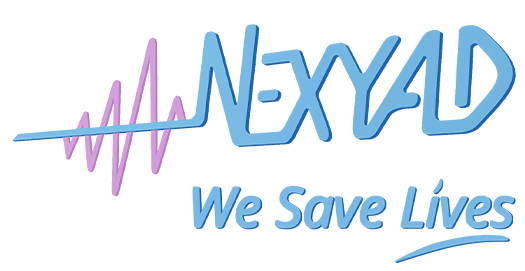The NEXYAD company is currently developing the construction of a database for the validation of systems of driver assistance and driving delegation, (ADAS and Autonomous car) using the AGENDA methodology published in the 1990s by Gérard Yahiaoui (methodology initially intended to handle, among other things, the construction of learning databases and tests for the implementation of neural networks).
This database has two essential characteristics:
1) Real-life situations
Indeed, the AGENDA methodology recommends describing the possible variations of signals and input images as factors of variability and their crosses.
Example, for obstacle detection:
. weather (dry weather, sunny weather, rain, fog) . overall brightness (low, medium, high)
. vehicle speed (low, moderate, high)
. type of road (motorway, road with marking, road without marking, …)
. coating (bitumen 1, bitumen 2, …, pavers)
. day / night (car headlights and infrastructure lighting)
. season (spring, summer, autumn, winter)
. etc.
Type of obstacle:
– static obstacle
. linked to the infrastructure: works terminals, tolls, …
. related to users: tire on the roadway, package dropped from a truck, motorcyclist lying on the road following an accident, vehicle broken down stopped on the roadway, pedestrian stationary on the edge of the roadway (visible / hidden)
– moving obstacle
. truck, car, vulnerable (pedestrian, bike, motorcycle) with the typical trajectories (longitudinal in the direction of travel, longitudinal in the opposite direction of travel, lateral) and the position (opposite, right, left) .
. Etc.
Real-life situations examples :

We see that if we combine these factors, we can find quite quickly a very large number of cases. Now, the development of ADAS systems is complex, and it is necessary to proceed by successive iterations, from simple situations to complicated situations.
Our database allows this, since all records are described such as cross-referring of modalities of the factors of variability. We thus know exactly in which cases the system was tested or not.
The formalism of ‘cross-referring of modalities of the factors of variability’ makes it possible to use experimental designs, and in particular orthogonal fractional plans, to greatly reduce the number of cases to be tested while guaranteeing maximum coverage of real-life situations. In this context, we can develop an ADAS on an orthogonal fractional plane and test it for other orthogonal fractional planes, for example.
2) Ground reality
It is a question of define the obstacles and elements of the infrastructure (markings, road edges, etc.) on the images so as to constitute a reference allow measuring the performance of the system.
1.1, summer, cloudy, unmarked road, moderate speed, tire on roadway, dry weather
1.2, summer, cloudy, unmarked road, moderate speed, package on roadway, dry weather
2.1, summer, cloudy, unmarked road, moderate speed, visible static pedestrians at the edges of the roadway, time
2.2, summer, cloudy, unmarked road, moderate speed, human lying on roadway, dry weather
etc.
It is not certain that one can meet these few cases, even by driving 1 million km on open road!
Target of this database :
NEXYAD starts its collection of images and data:
. video (towards the front of the vehicle) color
. accelerometers
. gyros
The files are synchronized by the RT-MAPS tool of the company INTEMPORA.
The files are saved in RT-MAPS format and directly replayable on this tool.
NEXYAD is currently looking for contributors on this internal project. Contributors co fund and have in return free access to the database, unlimited in time. This contribution will accelerate the work of collection and labeling.
NEXYAD wishes to make this database available soon, free of charge to give material to the ADAS community and the autonomous vehicle, in a reduced version of the database, and in a paid way (in the form of subscriptions) for the complete base.
NEXYAD’s ambition is to propagate its methodological expertise and to enable everyone to evaluate the performance of vision systems for ADAS, be they systems developed by NEXYAD or others.

